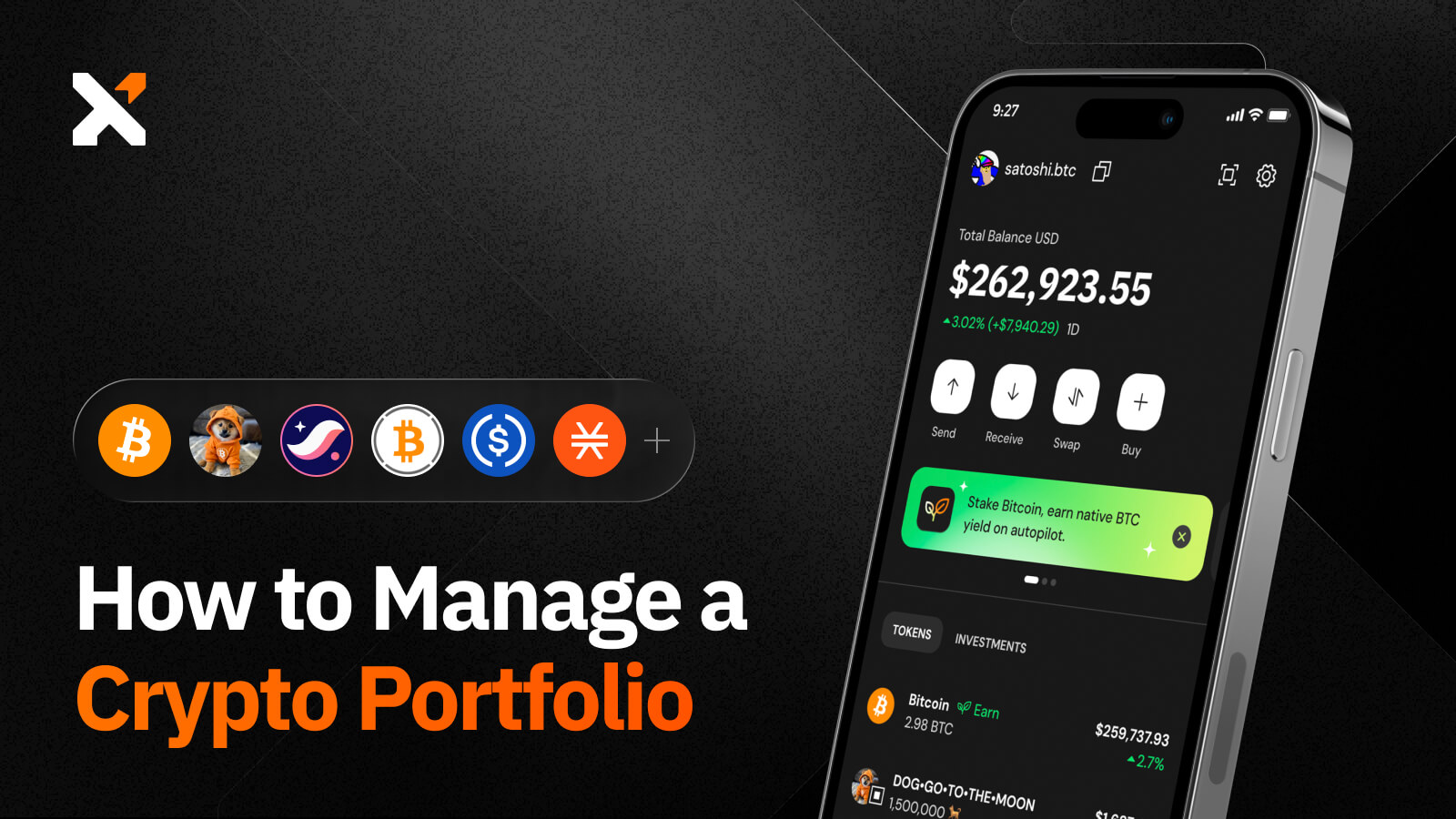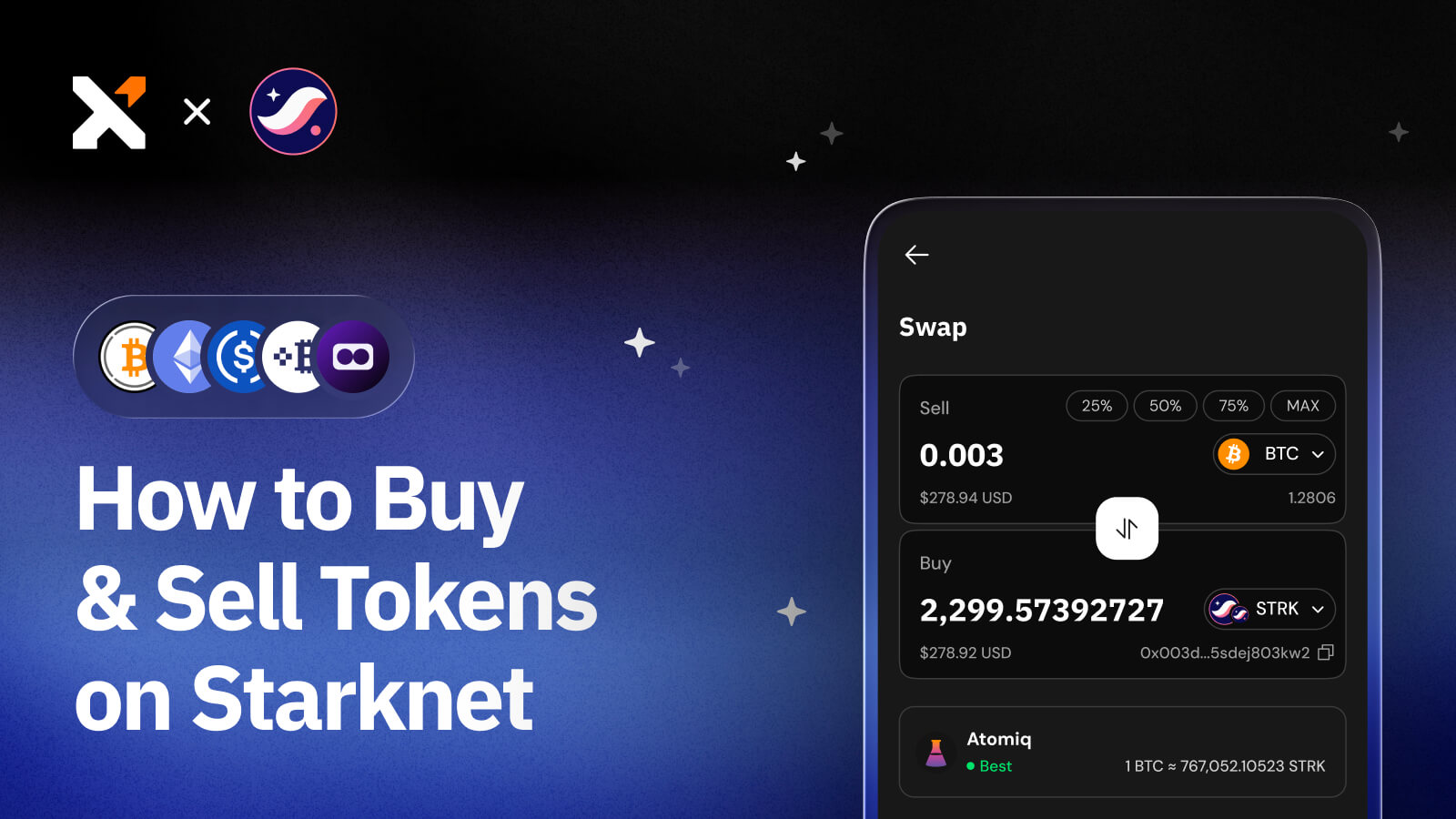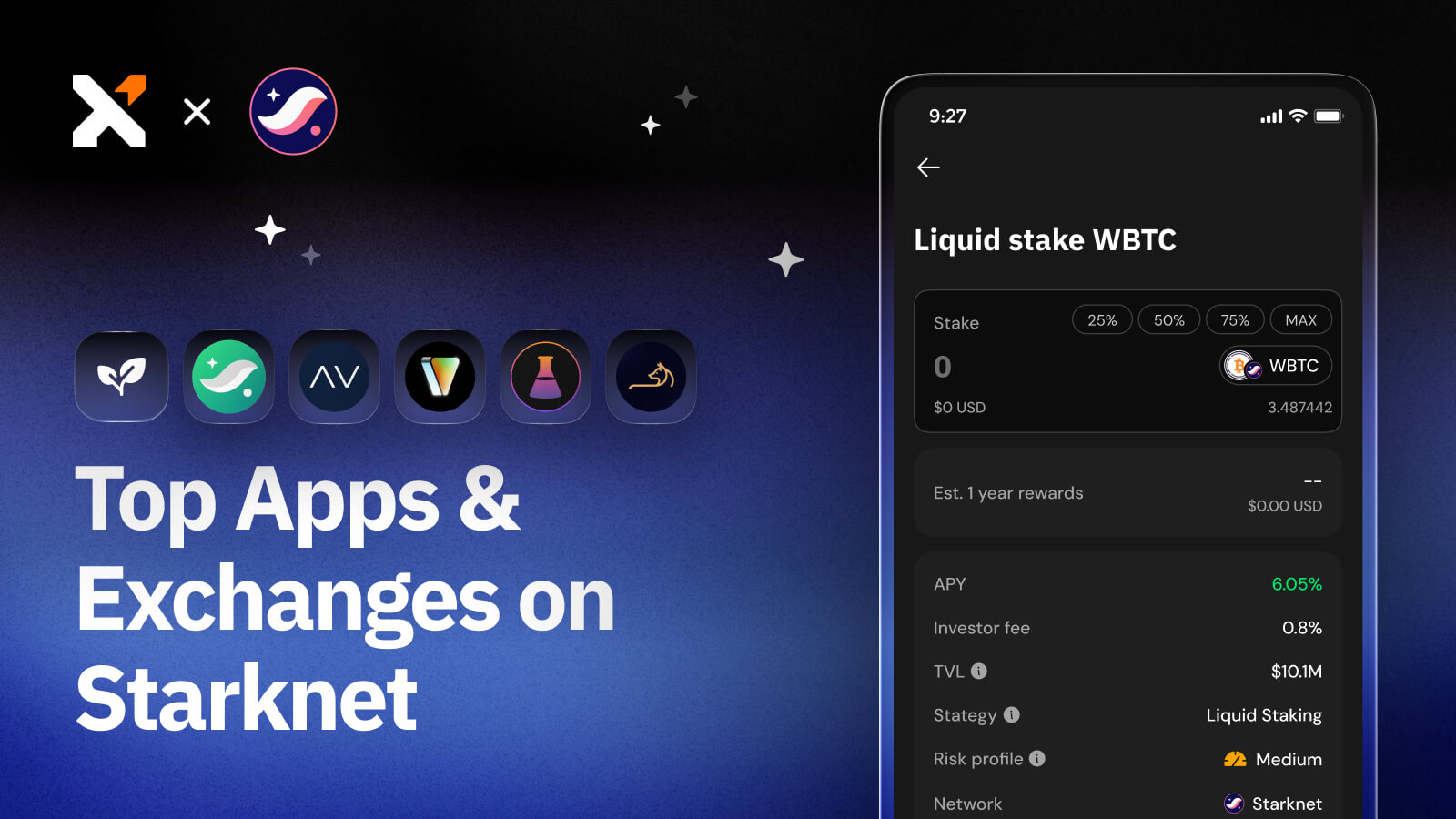What Is the Bitcoin Halving? A Complete Guide
As we draw closer to another Bitcoin halving, it’s essential to understand why this event is significant and how it could affect you as a Bitcoin holder.

Sign up for updates!
Stay tuned to our latest news and updates
.svg)
As we draw closer to another Bitcoin halving, it’s essential to understand why this event is significant and how it could affect you as a Bitcoin investor.
Keep reading to discover what the Bitcoin halving is, how it works, and what effect it has had on the price of bitcoin in the past.
What is the Bitcoin Halving?
The Bitcoin halving is a periodic event that takes place roughly every four years, or 210,000 blocks, where the Bitcoin mining block reward is cut in half, hence the name “halving.”
As a result of halving events, the mining reward will continue to diminish over time until all 21 million coins are in circulation. Based on the pre-set schedule, all bitcoin should be circulating by 2140.
The halving is part of Bitcoin’s monetary policy that seeks to regulate bitcoin’s supply and inflation rate. This policy is set in code, cannot be altered, and clearly outlines Bitcoin’s inflation rate from day one.
Newly issued supply becomes scarcer approximately every four years, resulting in a disinflationary scenario for the digital currency. When Bitcoin’s disinflationary monetary policy is met with increasing demand (which has been the case in the past), the price of the cryptocurrency increases as a result.
How Does the Bitcoin Halving Work?
To understand how the halving works, you must first know the basics of Bitcoin mining.
Here’s a recap.

Mining is the process through which miners process Bitcoin transactions. It is also the process through which new BTC is added into circulation. Miners compete against each other using computational power and energy to solve mathematical puzzles. The process of solving this mathematical problem is called Proof-of-Work.
The miner that finds the solution (producing a nonce, which should be below a certain target number) the fastest gets to add the next block of verified transactions to the chain and receive newly-generated BTC as a reward. All the blocks on the blockchain are connected to each other such that no one can alter the content of one block without modifying the records of all the blocks. Completing such a task is virtually impossible and gives the Bitcoin blockchain its immutability.
A block is simply a file holding records of multiple Bitcoin transactions. Its maximum size is 4 MB. The Bitcoin protocol creates new blocks about every 10 minutes on average, and miners must compete to find the next block and add it to the blockchain. However, blocks can be generated in more than 10 minutes or less, increasing or lowering the time it takes for 210,000 blocks to be mined. That is why it is hard to predict the exact date on which the halving event occurs.
In Bitcoin mining, there’s something called mining difficulty. It’s the degree of difficulty involved in solving the mathematical puzzle, i.e., the target number mentioned above. Bitcoin’s mining difficulty is continuously adjusted after every 2,016 blocks have been mined. The upward or downward adjustment of the mining difficulty depends on the number of miners on the network and their combined computing power. The more miners that join the network, the greater the mining difficulty and vice versa.
Besides the block reward, miners also get the transaction fees network users pay for transaction verification. These earnings incentivize miners to participate in the network.
After every 210,000 blocks, the Bitcoin protocol slashes the block reward by 50%, minimizing the amount of BTC being created and put into circulation. There will be 32 halving events for the Bitcoin network until 2140 when the last bitcoin will be mined.
The graph below presents the decreasing BTC issuance rate over time.

Bitcoin’s inflation rate declines with every halving event. According to Glassnode data, Bitcoin’s current inflation rate is 1.74%. This percentage will drop after the next halving, scheduled for April 2024.

The chart above shows Bitcoin’s falling inflation rate over time, highlighting the digital currency’s disinflationary nature.
The Bitcoin Halving Schedule
The block reward was 50 BTC at launch but has reduced considerably over the last three halvings, as shown below. The current block reward is 6.25 BTC. In April 2024, this reward will decline to 3.125 BTC.

When Was the First Bitcoin Halving?
The first Bitcoin halving occurred on November 28, 2012, bringing the mining reward from 50 to 25 BTC. Bitcoin mining pool Braiins Pool, formerly Slush Pool, mined the halving block. On this day, bitcoin’s opening price was $12.53, according to CoinMarketCap data. 150 days later (April 27, 2013), the price soared to a high of $147.41.
210,000 blocks later, another halving took place on block 420,000. It was July 9, 2016, and the price was $666.38. After 150 days, the price climbed to a high of $765.62. The block reward fell from 25 to 12.5 BTC. The 2016 halving block was mined by F2Pool.
The first and second halvings brought the circulating supply to 50% and 75%, respectively.
When Was the Last Bitcoin Halving?
The last Bitcoin halving happened on May 11, 2020, lowering the award from 12.5 to 6.25 BTC. On the halving day, the opening price was $8,755.54. 150 days afterward (October 8, 2020), the price had risen to a high of $10,945.74.
The 2020 halving event occurred on block 630,000 and was mined by Antpool. This halving brought Bitcoin’s circulating supply to 87.5%.
When Is the Next Bitcoin Halving?

The next Bitcoin halving will take place sometime in April 2024. It will happen on block 840,000, shrinking the prize from 6.25 to 3.125 BTC. There are currently about around 36,400 blocks left until block 840,000 is reached.
The 2024 halving event will bring the total mined Bitcoin supply to 93.75%. Subsequently, the next halvings will continue scaling down the reward by half until all 21 million coins are in circulation. By 2030, more than 98% of bitcoin’s total supply will be mined.
Why Is There a Bitcoin Halving Event Every 4 Years?
Let’s take a look at why Bitcoin halving events occur.
Regulate Supply
Satoshi Nakamoto created a pre-set schedule that regulates how much bitcoin is added into circulation. This lets market participants always know how much BTC is in the market. Based on the supply and demand principle, bitcoin’s price could rise as it gets scarcer and demand increases.
Control Inflation
As Bitcoin’s new supply decreases over time, so does its inflation rate, meaning it is a disinflationary asset. Therefore, bitcoin will potentially grow in value over time, unlike fiat currencies that decline in value due to inflation.
Bitcoin’s supply is limited to 21 million. This fixed supply cannot be modified. This factor and the regular halving events ensure that Bitcoin’s monetary policy is clearly outlined from the onset. On the contrary, governments regularly print new money since they believe some degree of inflation is good economically.
As a result, fiat currencies are inflationary. Conversely, Bitcoin is disinflationary, which is why it’s considered a hedge against inflationary fiat money. The cryptocurrency gives investors an option to potentially prevent their fiat-denominated wealth from losing value by converting (some of) it to bitcoin.
Strengthen Price Performance
Basic economics says that if the demand for an asset outstrips supply, its price will rise. Therefore, growing demand when Bitcoin’s new circulating supply is constrained further can send its price on an upward trajectory.
So far, bitcoin’s price has followed this rule post-halving, with the price of the digital currency climbing to new highs after each halving event. This surge in value could continue after each of the subsequent halvings in the future, but it’s not guaranteed. As a result, investors should consider other factors when making investment decisions pre- and post-halving events.
What Happens to Bitcoin After The Last Halving?
The last halving is poised to take place in 2140, after which miners will stop receiving block rewards. However, transaction fees will continue incentivizing miners to secure the Bitcoin network.
If the Bitcoin network has reached widespread global adoption by then, transaction fees should be a sufficient source of income to keep mining a worthwhile endeavor.
Bitcoin will also have its maximum supply of 21 million coins in circulation after the last halving in 2140. At this point, it will be a very scarce and deflationary asset with a potentially high price value if demand continues to increase over time.
What Effect Has the Halving Had on the Price of Bitcoin Historically?
Historically, bitcoin’s price has increased significantly post-halving in accordance with the law of supply and demand.
While the price surge hasn’t been immediate, history has shown that bitcoin eventually soared to new highs post-halving (about 12–18 months after).
On the day of the first halving on November 28, 2012, the cost of 1 BTC was around $12. One year later, 1 BTC was worth slightly over $1,000. The digital asset’s market cap also recorded a tremendous increase of about 9,100%, rising from $129.9 million to $13.7 billion.
During the second halving on July 9, 2016, bitcoin was worth $666.38 apiece. Fast forward to July 9, 2017, bitcoin’s opening price was $2,572.61. Later that year, on December 17, the asset pushed further upwards, hitting a staggering $20,089. Bitcoin’s market cap also soared from $10.2 billion on the day of the halving to $320.6 billion approximately 17 months later when it surpassed the $20,000 mark.
The most recent jaw-dropping all-time high (ATH) was recorded in November 2021, more than a year after the third halving on May 11, 2020. Bitcoin’s surged to its current ATH of $68,789.63.
On the day of the third halving, BTC opened the day at $8,755.54, and its market cap was $157.9 billion. One year later, on May 11, 2021, bitcoin’s price skyrocketed to a high of $56,872.54. About three months earlier, in February 2021, BTC had made history when its market cap reached a record $1 trillion for the first time.
Some experts predict that bitcoin’s price will be on the road to $100,000 post the 2024 halving. This new ATH could materialize in 12 to 18 months post-halving. However, investors must realize that this is just a projection. No one can say with certainty what will happen to the price post-halving. Therefore, it’s important to conduct your own research before making investment decisions.
Download Xverse today to use a secure Bitcoin wallet to store your coins.
FAQs
How often is the Bitcoin block reward halved?
Bitcoin’s mining reward is slashed by 50% every 210,000 blocks. The 210,000th block is arrived at in about four years. These halving events will happen 32 times until 2140, reducing the block reward paid to miners until all 21 million coins are mined. Halving regulates the supply of Bitcoin entering into circulation. If demand rises with declining new supply, bitcoin could become more valuable than it is today.
How many Bitcoin will there be after the next halving?
The next halving event in April 2024 will slash the block reward from 6.25 to 3.125 BTC. It will occur on block 840,000. This will be the fourth halving event as per the pre-programmed schedule. The previous halvings took place in 2020, 2016, and 2012.
In 2012, the block reward was slashed from 50 to 25 BTC, while the 2016 halving event reduced the mining prize from 25 to 12.5 BTC. In 2020, the mining reward was further slashed to 6.25 BTC from 12.5.
What happens to Bitcoin after the last halving?
The last Bitcoin halving will take place in 2140. All bitcoin will have been mined at this point, meaning there will be 21 million BTC in circulation. Moreover, miners will only have transaction fees as their source of income since there’ll be no more BTC to mine. If the Bitcoin network is globally adopted by then, these transaction fees could be a sufficient revenue source to keep miners in business. So make sure you store your coins in a secure Bitcoin wallet if you plan to invest in the digital currency for the long term.
Does the Bitcoin halving increase the price?
Every halving makes Bitcoin a scarcer resource because Bitcoin’s newly issued supply is diminished. Historically, rising demand when supply is constrained post-halving has caused bitcoin’s price to surge significantly. This attracts more investor demand, pushing prices further up. The bitcoin price has typically skyrocketed 12-18 months after the halving. While it's not guaranteed that the next halving will have the same impact on bitcoin’s price, many experts predict positive price action in 2025.
What are the benefits of Bitcoin halving?
Halving controls Bitcoin’s supply, guaranteeing its scarcity over time. It increases bitcoin’s potential of becoming a valuable asset if demand rises. Inflationary assets tend to lose value over time. However, bitcoin is designed to repel inflation thanks to its fixed and unchangeable maximum supply and the recurring halving events.
Share this article



.svg)




